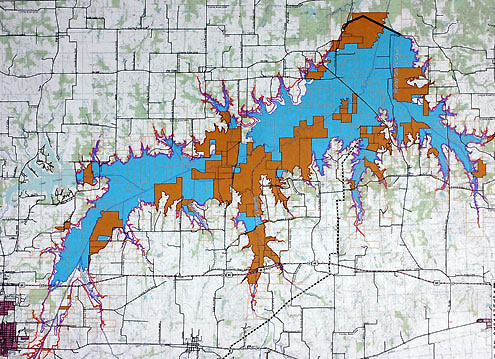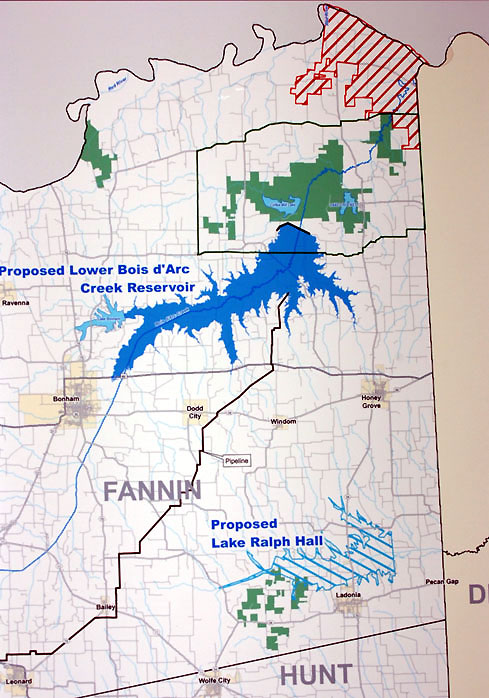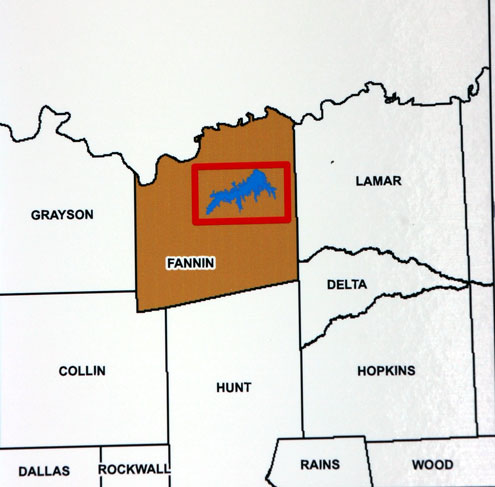"We have lit the fuse," former Fannin County Judge Derrell Hall once said concerning Lower Bois d'Arc Creek Reservoir.
That was at a public meeting on
From all indications available at a Public Scoping Meeting held
And that fuse is getting shorter.
It is still six or seven years before a creek named by French trappers in the 1700s begins filling a 12-mile long, 17,000+-acre reservoir built by North Texas Municipal Water District to meet the projected water needs of North Texas, but a steady stream of interested residents poured into the Multi-Purpose Complex west of Bonham on Tuesday to learn more about the project that is almost certain to alter the local landscape more than any undertaking in Fannin County history.
Although there was no formal presentation at the Public Scoping Meeting, representatives of North Texas Municipal Water District, U.S. Army Corps of Engineers and Texas Commission for Environmental Quality all were available to discuss issues and concerns.
Two of the most sensitive issues have always been the process by which land would be acquired for the reservoir as well as what land would be selected for mitigation purposes.
Mike Rickman, Assistant General Manager for North Texas Municipal Water District states that the reservoir will have a total footprint of 22,000 acres and 10,000 acres of that land has already been purchased or under contract.
"Not one piece has been condemned," Mr. Rickman adds.

While difficult negotiations and an occasional impasse would seem likely on any project of this size, conversations between area landowners and representatives of North Texas Municipal Water District were businesslike and suggested an increased level of cooperation and understanding from earlier meetings.
Rickman is optimistic that North Texas Municipal Water District will resolve concerns regarding mitigation land with the impending purchase of Riverby Ranch, a sprawling 14,747-acre ranch along

The 12-mile long lake will most likely be dissected by causeway, or raised roadway, north of Lannius Community with a bridge in the center of the causeway. Flood waters rushing into the reservoir would be restrained by the causeway, while the water north of the raised roadway would have less sediment during periods of high water. The pump house will be located on the northeast portion of the lake, north of Windom and Allens Chapel.
A 90-inch diameter, 29-mile long pipeline will extend from the pump house to a new water treatment plant north of
Rickman said that while North Texas Municipal Water District has permitted 14.4 miles of 66-inch pipeline to carry untreated water from the Leonard site to an outfall structure at Pilot Grove Creek, which would deposit the water in Lake Lavon, a more likely scenario would involve treating all water from Lower Bois d'Arc Creek Reservoir at the Leonard water treatment plant and enlarging that plant when demand requires.

At least in comparison to all other projects in
Either way, we have lit the fuse.